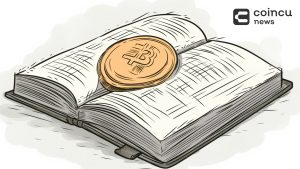The NFT potential is taking a quantum leap with the new Dynamic NFT standard from Koii Network
In April this year, an anonymous buyer bought a copy of Action Comics # 1 for $ 3,250,000 – the highest number ever for a classic comic book.
The comic was published in 1938 and features Superman’s first appearance and is one of the last known copies to survive. Before the auction, it was rated by the Certified Underwriting Company (CGC) on a 10-point system, where it received a near-perfect rating.
Any legal copy of Action Comics # 1 is worth a decent amount of money, but this particular book has sold out from the others because its physical quality is still excellent.
This is also not a situation most non-fungible tokens or NFTs would face. That Multiverse of superlatives If you choose OpenSea, it will look exactly the same in a hundred years as it does today, except in the event that the global Internet goes down. But if their quality remains the same over time and space, does the lack of age differences really make such collectibles less valuable?
Koii Network would like to investigate this question in collaboration with the digital artist Darren Kleine with its new technology Dynamic NFTs.
“I want a limited number of digital collections that may or may not be in pristine condition depending on how the owner takes care of them. Bringing the scarcity of physical collectibles into NFTs, ”Kleine said in an interview with Cointelegraph, showing an example that changed from a stereoscopic portrait to a distorted blob and eventually faded to black.
These properties are in many ways similar to living things. They grow, transform, degrade and regenerate on the basis of external stimuli, which (at least in this original sequence) are recorded with the proof-of-real traffic mechanism. This system measures the user’s attention to each NFT and changes the physical representation of the object based on the quantity and quality of that audience.
A demo by Al Morris, founder and CEO of Koii, showed that the entire process is taking place on the line; namely the Arweave blockchain. Each NFT even retains the required visual content in the contract’s storage layer, rather than just linking to external graphics (as most NFTs do today). Morris told Cointelegraph:
“Real traffic is a little proof of work that you sign with your wallet and send to the network by saying, ‘I’ve looked at something.’ However, you can embed it in the page just like you would with Google Analytics. One line of JavaScript and each page of the site with Dynamic NFT automatically creates portals as people view them. “
According to Morris, these objects actually respond to reality. Each NFT contains a bit of JavaScript that can check its own smart contract status. When a new record is uploaded, it records any additional view increments and updates the asset’s visuals accordingly. These states of change can be permanent or flexible, depending on what the artist is trying to achieve.
Other examples suggested play on the concept of visual nominalism in an equally convincing way. For example, Kleine described a work that begins as a sketch and becomes more and more detailed and beautiful as the viewer looks at it. However, if the quality of attention drops, the subject will eventually turn into a zombie – and stay that way forever.
“There are probably a hundred copies of it and some people will have it in its most beautiful state and some will have it in its zombie state. Maybe some people prefer zombies. Who knows?”
CEO Morris shared another example of a live NFT called a daffodil. “We made it public because it got more attention,” said Morris.
“If it gets more attention today than it did yesterday, it will begin to bloom until it is fully bloomed. At this point it will stay open as long as it gets more attention. No, it started to rot. If the attention is continually reduced, it will rot until there is nothing left. “
Morris assured Cointelegraph. During our conversation, his team presented a variety of theoretical possibilities: NFTs act as digital pets who need companions who maintain the functions of the platform based on the quality of user engagement, music tokens sounding in and out in response to their owner’s actions. Morris suggests, “You can put them on a TV screen and get them to tell you something,” another person autonomous. “
Surprised by the potential of the technology, Kleine offered:
“I didn’t even know that you could really imagine all the possibilities with it. Have a lot. “
Dynamic NFT standard is publicly demonstrated at Sanctor Capital Demo Day on September 14 at 2 p.m. ET. Registration is open and free.
.
.












